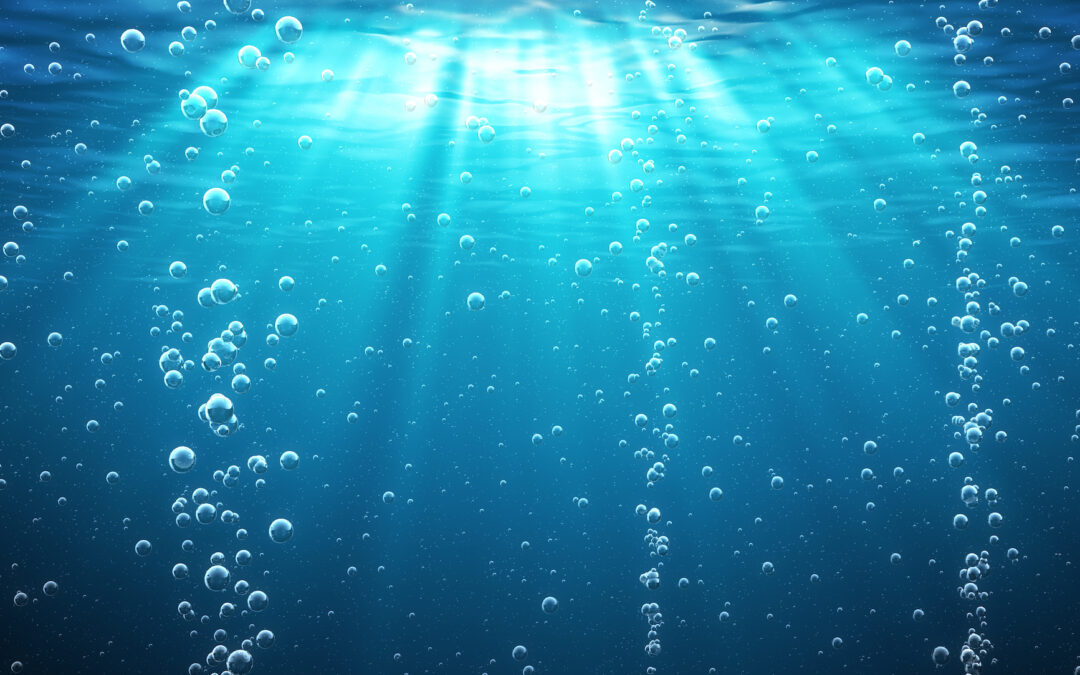My Master’s Thesis is about oxygen extreme events in the eastern tropical Pacific. Now, why would I look at oxygen extreme events and what are oxygen extreme events first of all? And secondly, why is my region of interest the eastern tropical Pacific?
Let me start with the most fundamental question of these three. What are oxygen extreme events? Extreme events in general are defined as “the occurrence of a value of a weather or climate variable above (or below) a threshold value near the upper (or lower) ends of the range of observed values of the variable“ (Seneviratne et al., 2012). Thus, this definition is related to the probability of the occurrence of such an extreme event. Namely the events lying in the upper or lower tail of the probability distribution are of interest. In addition to this statistically motivated definition, extreme events can also be identified using an absolute threshold. This second approach is connected to a specific, possibly impact-related threshold (Seneviratne et al., 2012). In my thesis, the climate variable I am looking at is oxygen. I investigate marine oxygen extreme events, specifically events of low oxygen concentrations. In terms of defining “extreme“ with regard to marine oxygen concentrations, I mostly use absolute thresholds. While I define and identify oxygen extremes simply as events where oxygen concentrations drop below 60 mmol/m3 (or 22 mmol/m3 and 5 mmol/m3 respectively), I also explore feasibility and benefits of employing a relative, probability-based threshold.
The next question is the “why“ question? Why do I want to know more about oxygen extreme events? Oxygen is a crucial component for ocean productivity, for biogeochemical cycling of carbon, nitrogen and other important elements, and it’s essential for all aerobic life and marine habitats (Keeling et al., 2010). With climate change, the loss of oxygen is predicted to increase and thus influence the aforementioned elements unfavorably. Specifically, in a warming climate two main factors enhance deoxygenation. For one thing, oxygen solubility decreases with warming sea temperature and secondly, global warming possibly enhances upper ocean stratification which in turn reduces oxygen supply to the deep ocean (e.g., Bopp et al., 2002). Studying how climate change may affect oceanic oxygen concentrations is not only important because of the impact on biological components but also because of oxygen’s role as an indicator for physical and biological change (Joos et al., 2003). Dissolved oxygen is very sensitive to biological cycling and is consequently the metric to take into account when looking for the imprint of climate change on ocean biogeochemistry (Keeling et al., 2010).
Finally, why do we care about oxygen extreme events in the eastern tropical Pacific? The eastern tropical Pacific, namely the Humboldt current, constitutes one of the most important upwelling regions. Upwelling systems bring cold, nutrient rich waters from the deep ocean to the surface (NOAA, 2018). These areas are known to be highly productive and thus are of great socio-economic value. At the same time, the Humboldt current, is also known for its shallow and intense oxygen minimum zone (OMZ) (Graco et al., 2017). OMZs are water volumes where high biological production in the surface waters, and thus high respiratory oxygen demand, are met by low oxygen supply from current systems. The resulting oxygen-deficient zones are a lethal environment for most marine organisms (Oschlies et al., 2018). Furthermore, the eastern tropical Pacific exhibits great variability on different timescales. Of particular interest is the interannual variability associated with El Niño – Southern Oscillation (ENSO) patterns (Graco et al., 2017). In conclusion, the upwelling region off Peru hosts a complex biogeochemical system and has drawn the attention of many researchers, including mine. In my thesis, I determine the frequency, intensity and recurrence of ocean oxygen extremes in Eastern Boundary Upwelling Systems.
References:
Bopp, L., Le Quéré, C., Heimann, M., Manning, A.C., and Monfray, P.: Climate-induced oceanic oxygen fluxes: implications for the contemporary carbon budget, Global Biogeochem. Cy., 16, 1022, doi:10.1029/2001GB001445, 2002.
Graco, M.I., Purca, S., Dewitte, B., Castro, C.G., Morón, O., Ledesma, J., Flores, G., and Gutiérrez, D.: The OMZ and nutrient features as a signature of interannual and low-frequency variability in the Peruvian upwelling system, Biogeosciences, 14, 4601-4617, https://doi.org/10.5194/bg-14-4601-2017, 2017.
Joos, F., Plattner, G.-K., Stocker, T.F., Körtzinger, A., and Wallace, D.W.R.: Trends in marine dissolved oxygen: Implications for ocean circulation changes and the carbon budget, Eos Trans. AGU, 84, 197, doi:10.1029/2003EO210001, 2003.
Keeling, R.F., Körtzinger, A., and Gruber, N.: Ocean deoxygenation in a warming world, Annu. Rev. Marin. Sci., 2, 199–229, doi:10.1146/annurev.marine.010908.163855, 2010.
NOAA. What is upwelling. National Ocean Service website, https://oceanservice.noaa.gov/facts/upwelling.html 11/14/18.
Oschlies, A., Brandt, P., Stramma, L., and Schmidtko, S.: Drivers and mechanisms of ocean deoxygenation, Nature Geoscience, 11, 467-473, doi: 10.1038/s41561-018-0152-2, 2018.
Seneviratne, S.I., Nicholls, N., Easterling, D., Goodess, C.M., Kanae, S., Kossin, J., Luo, Y., Marengo, J., McInnes, K., Rahimi, M., Reichstein, M., Sorteberg, A., Vera, C., and Zhang, X.: Changes in climate extremes and their impacts on the natural physical environment. In: Managing the Risks of Extreme Events and Disasters to Advance Climate Change Adaptation [Field, C.B., Barros, V., Stocker, T. F., , Qin, D., Dokken, D.J., Ebi, K.L., Mastrandrea, M.D., Mach, K.J., Plattner, G.-K., Allen, S.K., Tignor, M., and Midgley, P.M. (eds.)]. A Special Report of Working Groups I and II of the Intergovernmental Panel on Climate Change (IPCC). Cambridge University Press, Cambridge, UK, and New York, NY, USA, pp. 109-230, 2012.
